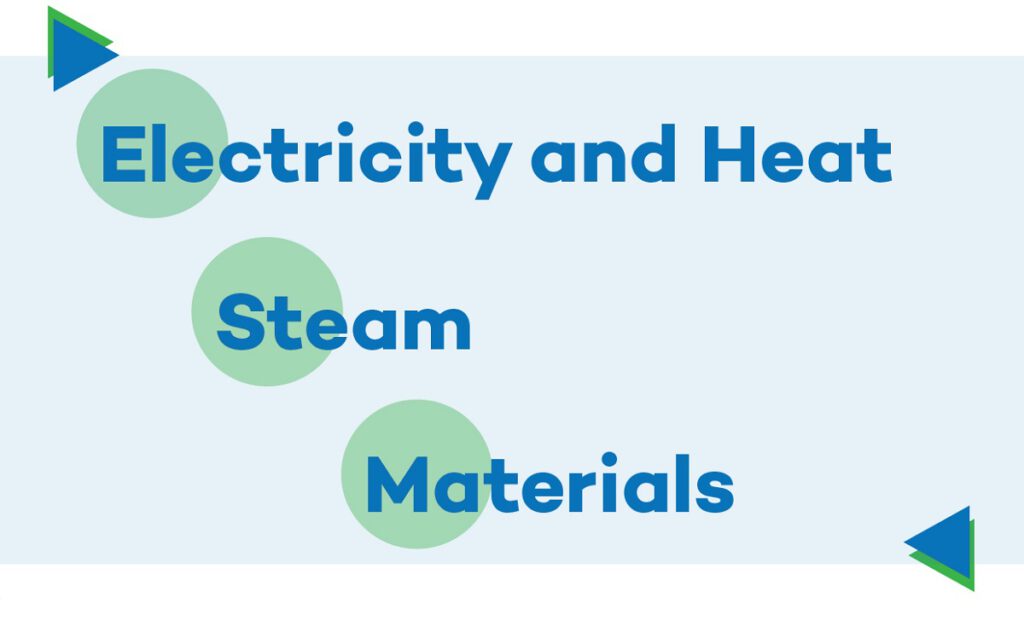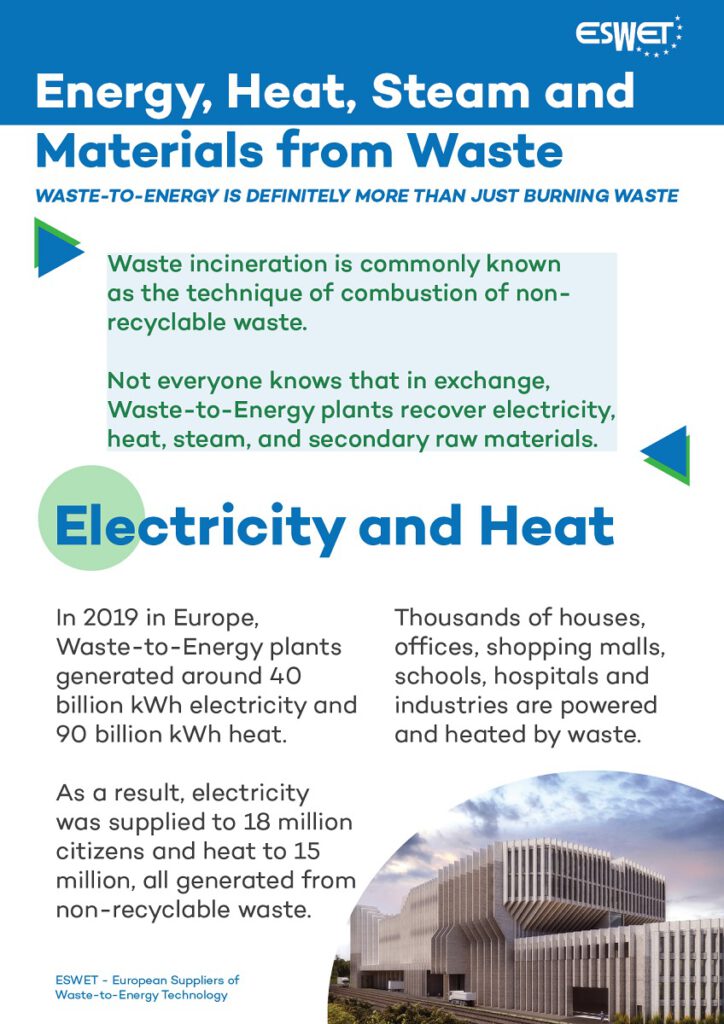Energy, Heat, Steam and Materials from Waste

Waste incineration is commonly known as the technique of combustion of nonrecyclable waste. Not everyone knows that in exchange, Waste-to-Energy plants recover electricity, heat, steam, and secondary raw materials.
Click here for the pdf version.
-
Electricity and Heat
In 2019 in Europe, Waste-to-Energy plants generated around 40 billion kWh of electricity and 90 billion kWh of heat. As a result, electricity was supplied to 18 million citizens and heat to 15 million, all generated from non-recyclable waste. Thousands of houses, offices, shopping malls, schools, hospitals and industries are powered and heated by non-recyclable waste.
-
Steam
Waste-to-Energy plants supply steam at suitable pressure and temperature for industrial purposes. For example, the ECLUSE network in Belgium supplies steam to six chemical companies at the port of Antwerp. It replaces the use of fossil fuel-fired boilers, saving up to 100,000 tonnes of CO2 emissions per year.
-
Materials
Metals such as iron, steel, aluminium, copper and zinc (and even silver and gold) can be recovered in Waste-to-Energy plants, extracted from the bottom ash or separated before waste is treated. The remaining part of the bottom ash is used in construction, for roads or as an aggregate for concrete. This allows saving virgin materials like gravel and sand.
